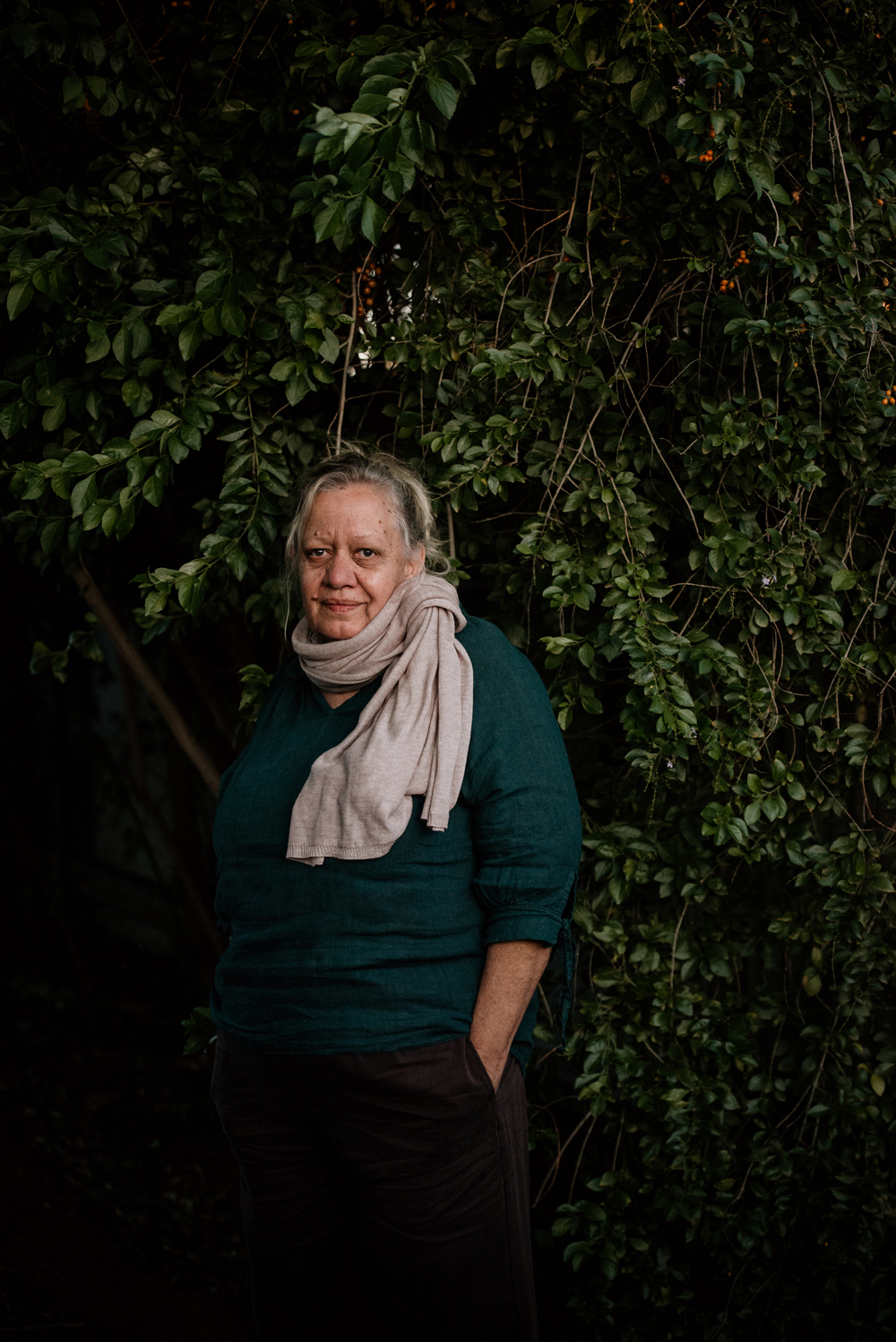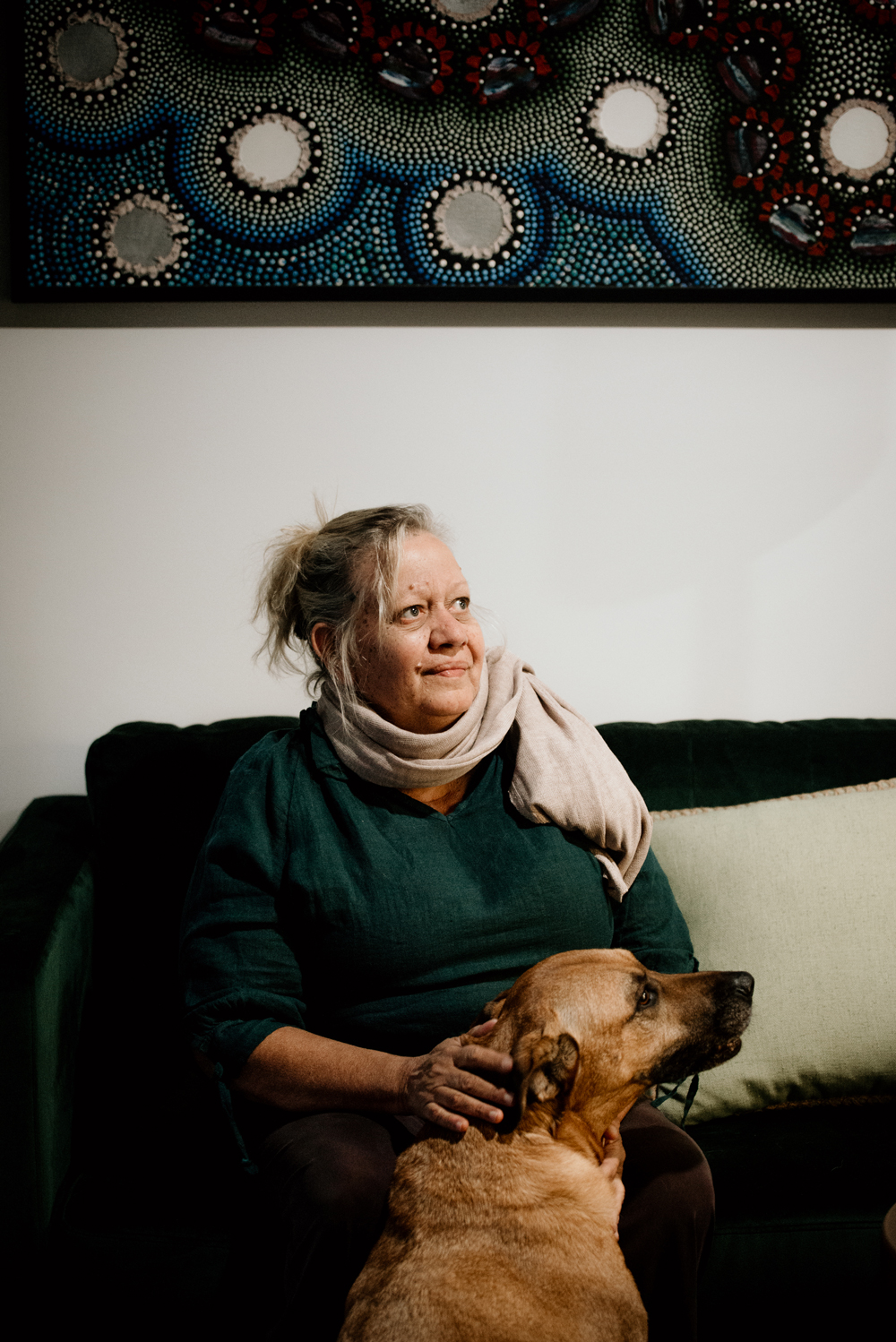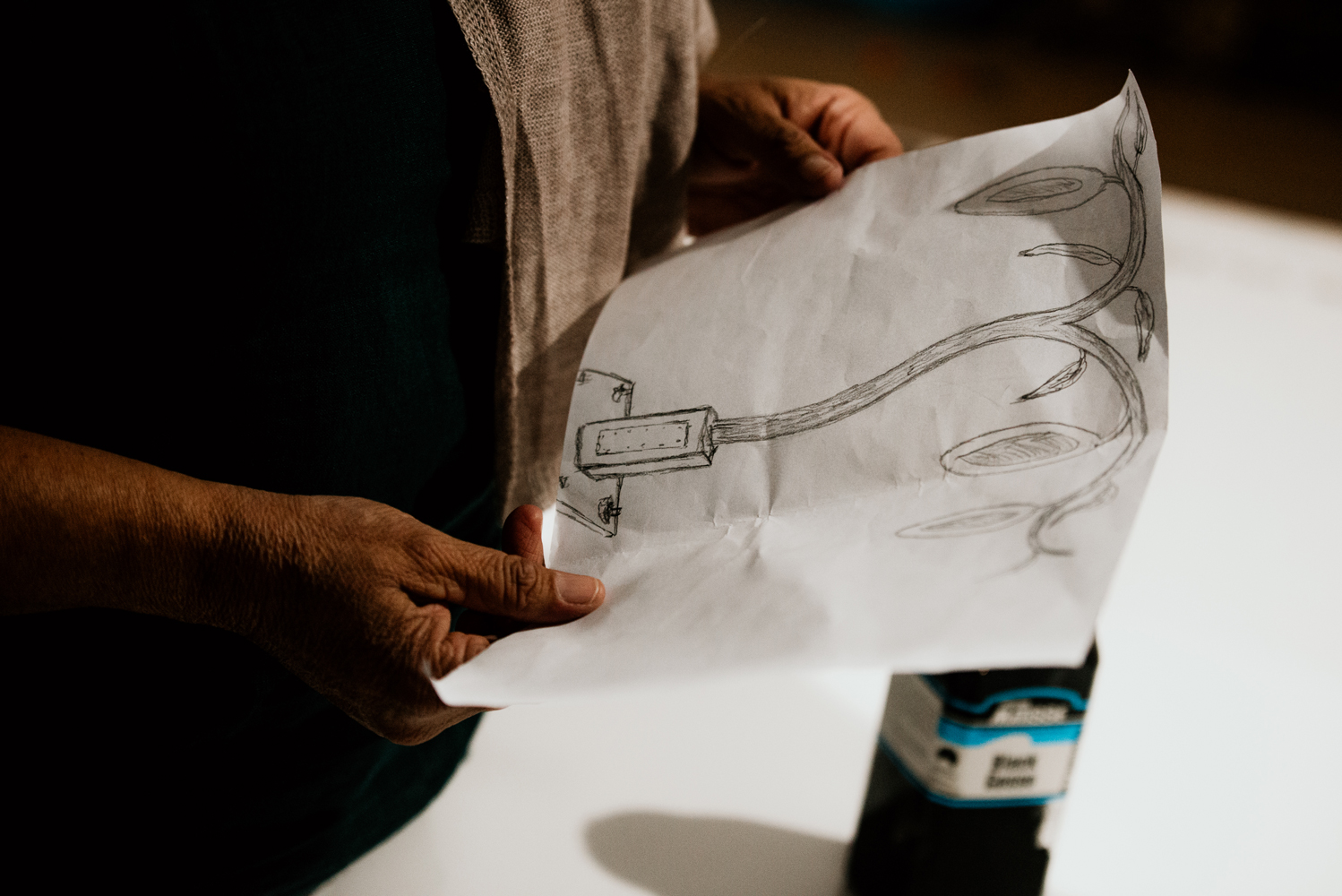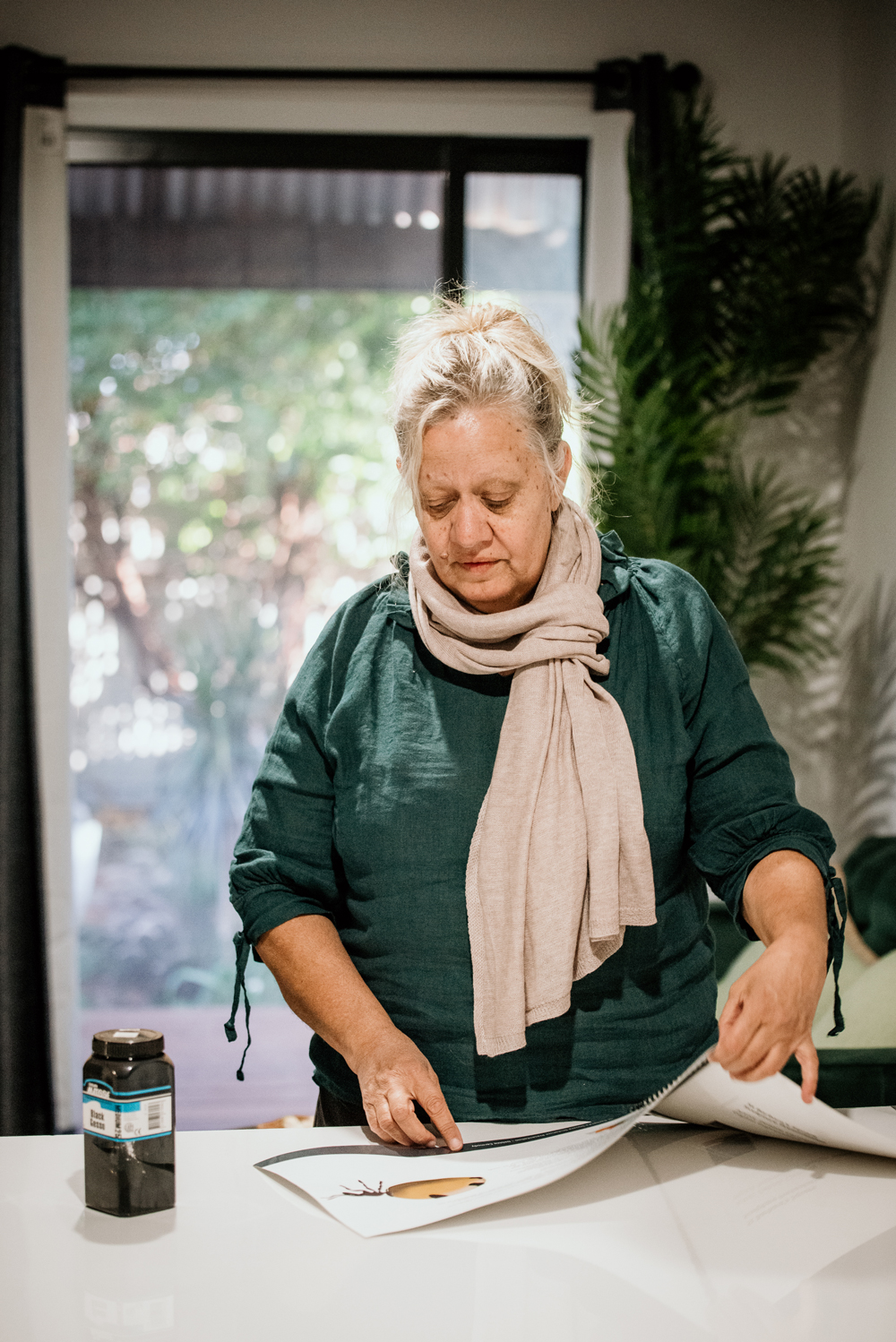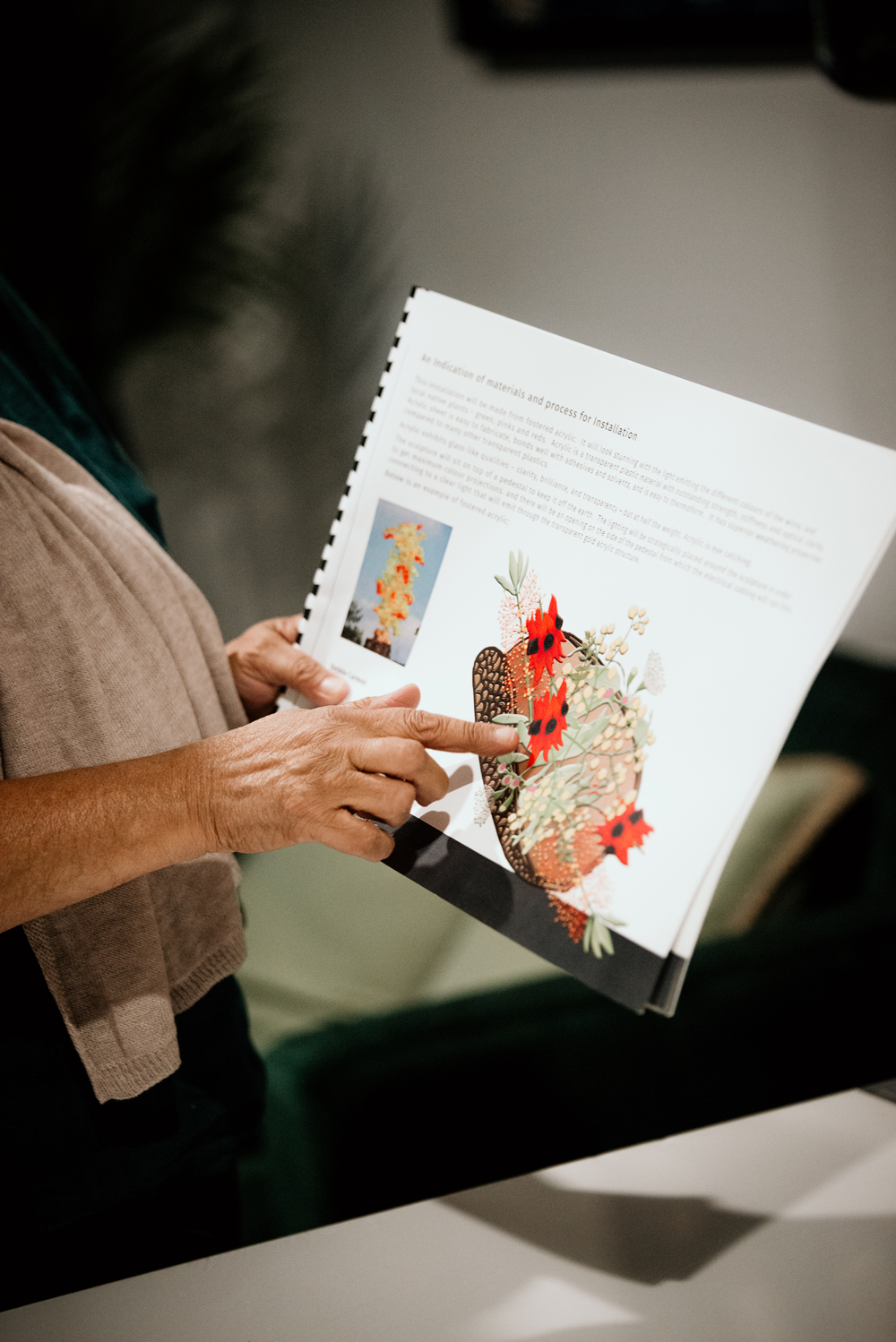“Still photography is one of the most powerful weapons in the world. And photography remains one of the most effective ways to communicate across the barriers of culture, language, time and experience” says Anangu artist Debbie Carmody.
Debbie Carmody at her home in Kalgoorlie, 2023. Photography by Mellen Burns
Debbie is interested in photography for social change, in its ability to draw attention to the social injustices in her community. We see this in her powerful photographic work, Power and Passion, taken during a protest held in the wake of the death of Boulder teenager Elijah Doughty. At the recent opening of The Alternative Archive in Kalgoorlie-Boulder, where these events took place, Debbie shared the important story behind the work. The following is a transcription from Debbie’s speech.
“It was Tuesday the 30th August 2016 when members of the First Nations community came together as one to protest against racism, because the events leading up to this protest actually began two years earlier with an increase in racial vilification about First Nation youth on two local social media sites. The racial vilification comments were based on racist stereotypes and racial profiling, that not only vilified but incited hatred and racist attacks on our youth, they openly encouraged people to murder our youth and pose questions such as “How many bodies will it take to fill a mine-site?”
Numerous complaints to both black and white people to the appropriate authorities fell on deaf ears. Members of the sites would take photos of our youth in public places, then a barrage of racist comments would follow. And there were comments that openly said, “Run people over” and when it happened, many of our white brethren rejoiced. Some said, “Not an eye for an eye, but a boy for a bike.” Others focused on the petty theft of minority of youth, but forgot the grand theft of white men. The police said: “Keep the peace and forgo justice” but what peace?”.
The photograph shows a group of First Nations youth on the left and the police riot squad on the right. Two young men stand strong against the commanding riot shields of the police. There is light illuminating their faces, offering an element of hope.
“This photograph is the voice of the voiceless” Debbie continues, “I stood within the crowd that day. You could feel the great sorrow within people. It was deep, it was quiet, but it was loud.”
“Anger is a sign that something needs to change. It was an outpouring of grief, of great sorrow, of hurt and pain. The youth in the community were saying “It shouldn’t be dangerous to be a young black male in this town. Stop attacking us, stop killing us.” They were saying “We will not comply, we will not go quiet, we will not submit. We are taking a stand.”

“You know that something is terribly wrong if the pain, sorrow, and outrage of people makes you more uncomfortable than the killing itself. It’s a righteous anger, not an angry mob, as stated by mainstream media and authorities. Anger born from deep sorrow is a result of social injustices. Social injustice is the cancer that lays hiding in the midst of society. Social injustice deters any truth in justice while heightening segregation and seclusion. Social injustice causes disparities both psychologically and physically. It robs you of your dignity. It takes away all integrity and steals one’s self-meaning that eliminates all opportunity of an equal place in society. Social injustice assists in the reduction or elimination of equal human rights. Social injustice creates no positive outcomes and sets the stage for more displaced anger among voiceless people that have not had their opportunity for justice.
When the police officer in charge stood up on that day and asked the crowd “What do you want? What can we do?” The youth said quite clearly and strongly “Shut down the racist social media sites.”
The following day one of the social media sites was closed and the second one became monitored and is still monitored today. This is the story behind this photograph. There is no change without emotion. Our youth stood tall and proud that day. First Nation youth in this town, had the power, and the passion, to implement change to local social media. It’s just a pity that the appropriate authorities did not listen to our voices two years previously. This is photography, for social change”.
Debbie has a background in film and journalism, and is a radio broadcaster and Manager of Tjuma Pulka Media Aboriginal Corporation in Kalgoorlie-Boulder. As well as her painting and photography practice, she is developing public artwork for the Kal City Centre Project, and is the Creative Director/Writer for the Nullarbor Plain Megafauna Digital Projection Project.
You can see Debbie’s work in The Alternative Archive touring exhibition, which continues through regional WA until 2024. Visit the exhibition page for upcoming dates and more information.
